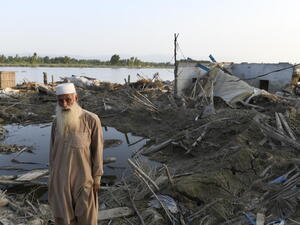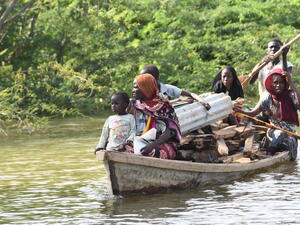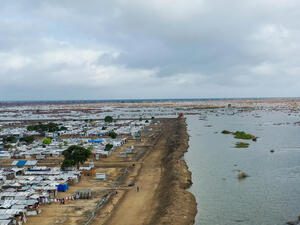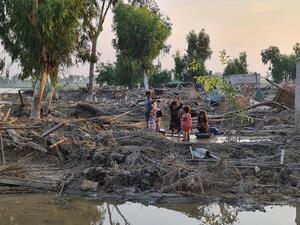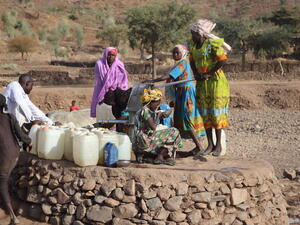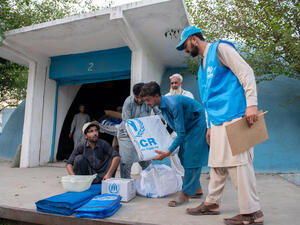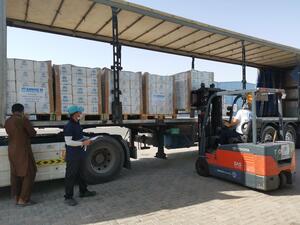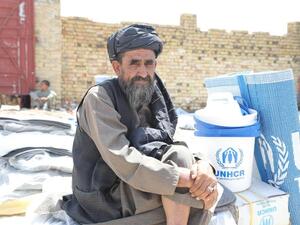UNHCR supports flood relief in Myanmar's south-east
UNHCR supports flood relief in Myanmar's south-east
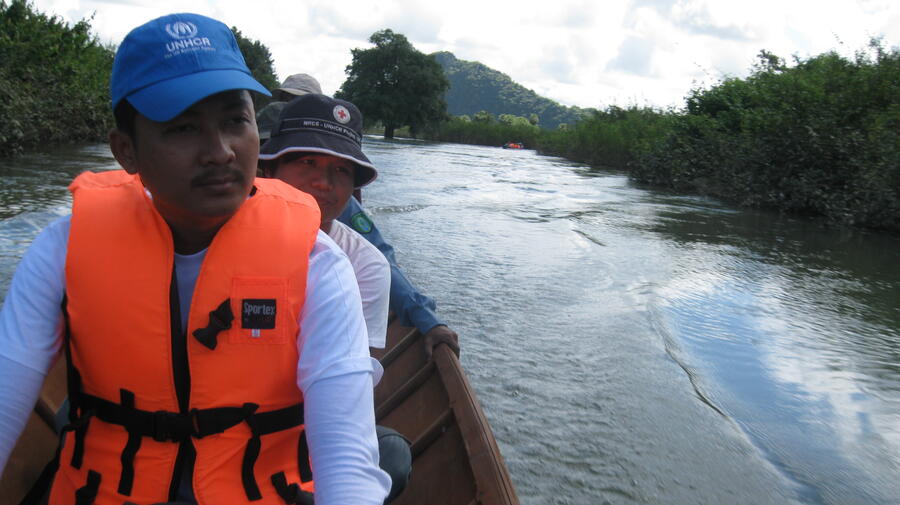
Aid supplies were delivered by boat to the most severely-flooded areas in Kayin state, south-eastern Myanmar.
HPA AN, Myanmar, September 2 (UNHCR) - Thousands of flood victims in south-eastern Myanmar have received relief supplies from the UN refugee agency as many of the displaced return to devastated homes.
An estimated 40,000 people were forced to leave their homes when heavy rains in late July and early August caused severe flooding in Myanmar's Kayin and Mon states, as well as the Thanintharyi region. Kayin was the worst-affected, with more than 33,000 people displaced. They were hosted in temporary sites, including schools and monasteries. As the floodwaters receded, many people have returned home to find their houses, belongings and crops badly damaged.
"When the Kayin state government requested assistance from UN agencies and NGOs, we immediately mobilized our staff to distribute relief supplies to the flood victims," said Hans ten Feld, UNHCR's representative in Myanmar.
From August 7-29, UNHCR worked with local authorities and the Myanmar Red Cross Society to distribute tarpaulins, blankets, mosquito nets, sleeping mats, kitchen sets, buckets, jerry cans and hygiene items to 3,200 families in the Kayin townships of Kawkareik, Kyainseikgyi and sub-township Kyaikdon. In Kawkareik, where most of the roads were closed off by flooding and landslides, the teams had to use boats to reach the communities.
In total, more than 16,400 people benefitted from the distribution. Many of them had previously been uprooted by conflict between government forces and non-state actors in Kayin state.
"This is the first time I've received assistance," said a 60-year-old woman in Kyaikdon's Hpa Yar Taung village. "The quality is very good too."
In parts of Kayin state, the rains are continuing but the authorities say water levels have fallen below dangerous levels. They have highlighted recovery needs in the areas of food security, agriculture and livelihoods.
"UNHCR has supported displaced and conflict-affected communities throughout south-eastern Myanmar since 2004," noted ten Feld. "We could not stand by and watch as the floods devastated more lives."
As part of its routine work with conflicted-affected communities in the south-east, UNHCR and its partners have engaged in more than 3,000 projects, including the repair and construction of water points, schools, clinics and shelters, and the provision of furniture and equipment to education and health facilities.
"By helping to improve access to potable water and sanitary facilities, primary health care services and basic education facilities, we hope to contribute to the development of communities hosting displaced people and returnees," said the UNHCR representative.
The refugee agency is also currently working with the Myanmar Red Cross Society to strengthen community-based organizations and provide life skills training in a number of areas, including first aid, health education and hygiene awareness.
By Antonius Kamerika in Hpa An, Myanmar


